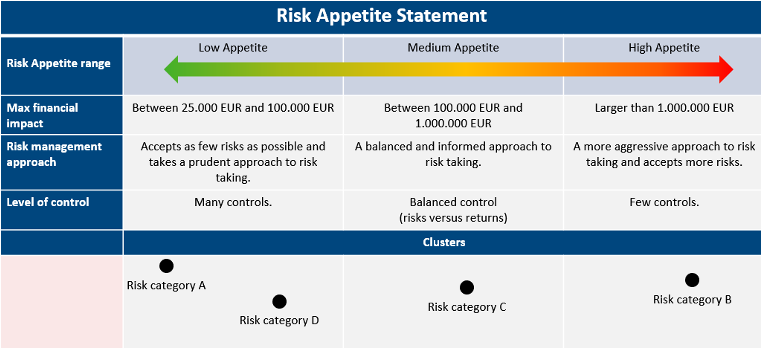Risk appetite is the degree to which an organization is willing to take risks. However, many organizations do not do much with this, or don’t know how to do this. In this short article I show how determining the Risk Appetite can really add value.
“Cost of control”
To have an organization in control, various measures must be taken and / or implemented. This allows the greatest risks to be covered. However, these measures often involve costs or have consequences for the allocation of resources, making them less available for other things. In short, control is accompanied by a certain “cost of control”. And you don’t want to guard a dime with a quarter. Properly establishing the Risk Appetite can help with this. I’ll explain how.
Determining your Risk Appetite
An important aspect of Risk Appetite is that you weigh up the degree of risk you want to take. And in matters where you want to take more risk, the degree of control does not have to be as high. In this way you can save costs and allocate scarce resources more efficiently. To give an example: an organization may choose not to take out insurance, for example. Then you have a higher Risk Appetite, with lower costs. But the downside is that if something unexpectedly happens (eg fire), the costs can be very high.
Organizations should take this consideration for each risk category: what level of risk are we willing to accept and what risks do we want to mitigate and at what price. That way you can use risk management in a much more efficient way.
How to make this transparent
The picture below shows how you can provide good insight into the Risk Appetite and how you can link the financial impact with your risk management approach and level of control. You can then plot each risk or risk category. This is a good starting point for discussion about the degree of control you want to use for each risk.

Conclusion
Determining your Risk Appetite is a good tool to apply risk management in a more efficient and effective way. Scarce resources are better allocated, and you can focus on the things that really matter. How do you apply this concept in your own organization? Let us know! There are probably other ways to apply this, so we are very interested to learn from your approach.
This blog is written by Remco Spruyt, co-founder of INTERMEDIATE Interim Professionals. If you want to know more about this topic you can contact us. We can also provide qualified Interim Professionals who can provide support on this topic.
